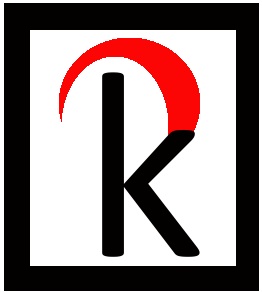Conservation Treatments and Reports as an Integral Part of Provenance Research
I’m honoured to have been invited to contribute to Flynn & Giovanni's The Provenance Research Blog.
Conservation treatments and their reports, which include condition reports, are an important yet underused asset in provenance research. As written and photographic witnesses to the state of an artwork at a specific point in time, including details on any damages, changes, place(s) of conservation, and history of the piece, these reports are an essential part of research.
You can read the full article here.
Providing better value to collectors: Technical analysis and collections management combined
The partnership between Art in Lab and Renata Kaminker – Fine Art Solutions, has allowed a collection’s owner to find the response to its scientific and collections management needs in one single place, thus saving valuable time and resources
Estelle Itié from Art in Lab and I are hard at work studying paintings under three different but complementary techniques:
Raking light
Ultraviolet (UV) photography
Infrared (IR) Reflectography
Each one of these analytical techniques provides a new level of information which will allow us to acquire a deeper understanding of the pieces under our care and the artist that produced them, while serving as added data to the inventory files being prepared.
In its most basic form, raking light renders the differences in the surface texture of the painting more visible, UV photography will provide information on which areas have been over-painted or if there is a varnish on the surface, and IR Microscopy will reveal any underlying drawings.
When combined with the previous study of the stratigraphic layers, performed a few weeks ago with co-founder of Art in Lab Ilenia Cassan, these images will allow to not only have empirical data supporting or refuting the artworks’ dating theories, but also allow for better future conservation treatment choices.
* Our client’s privacy being one of our prime concerns, when sharing any images we do so with the owner’s written permission and ensuring that the artworks are either blurred or have only details appear.
Raking light
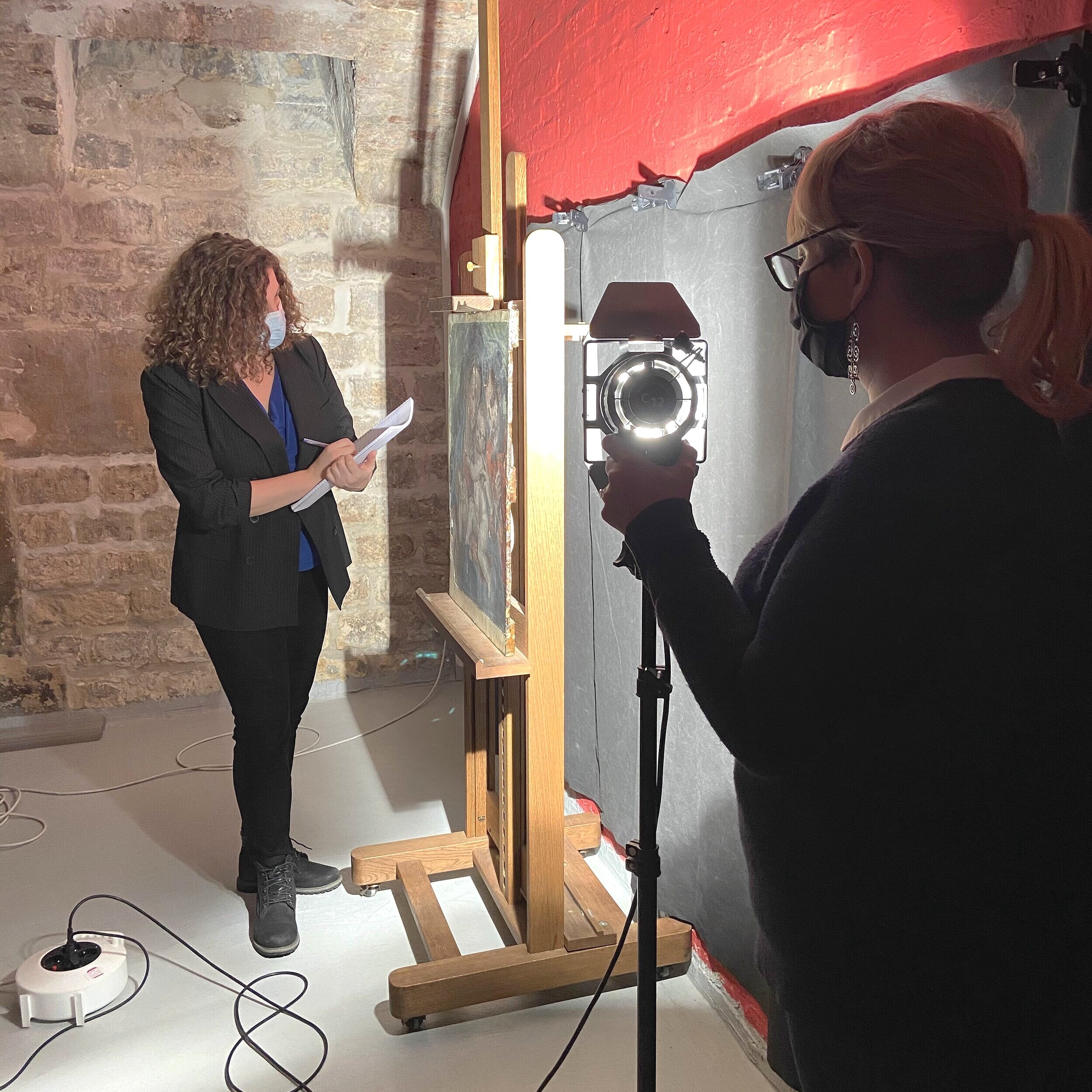
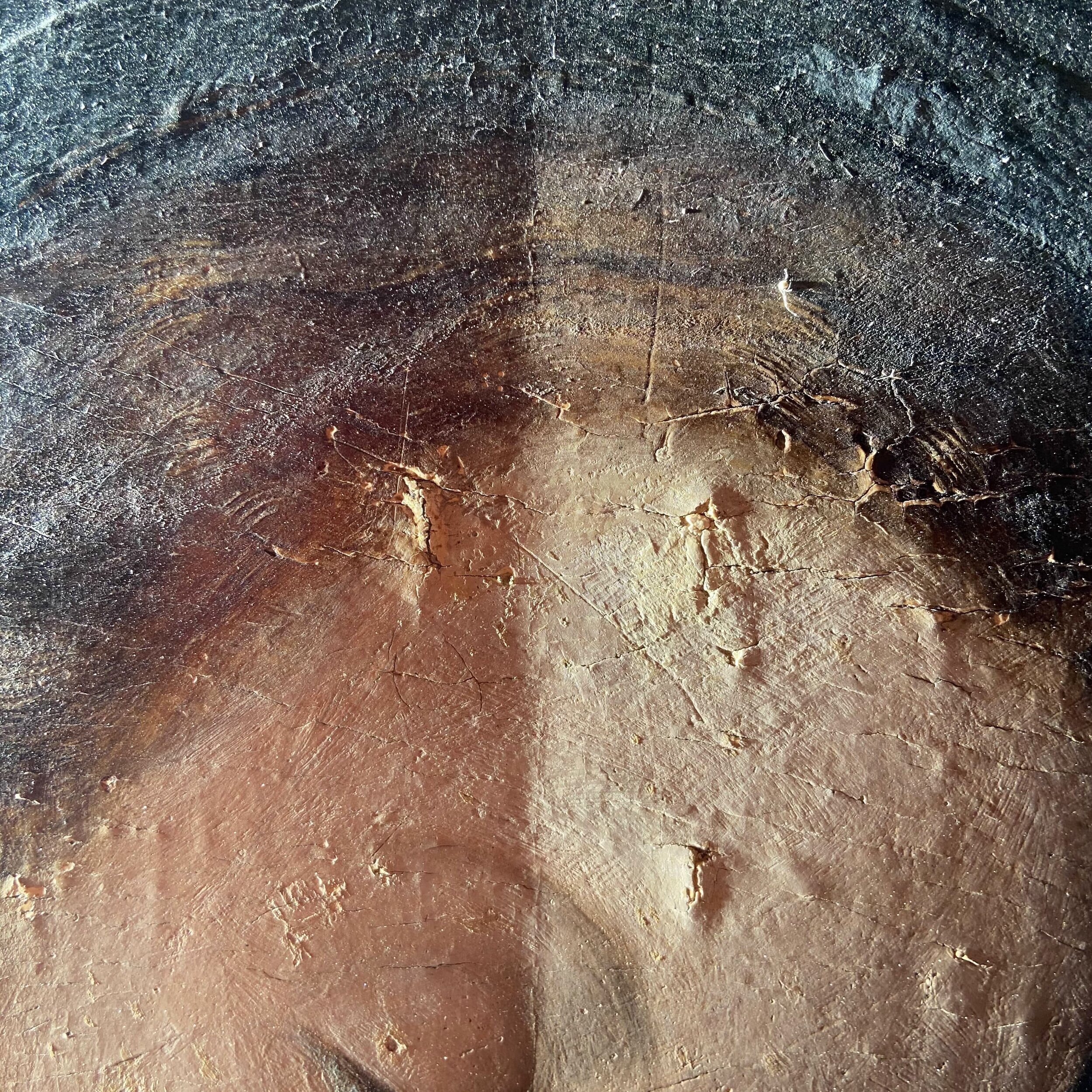

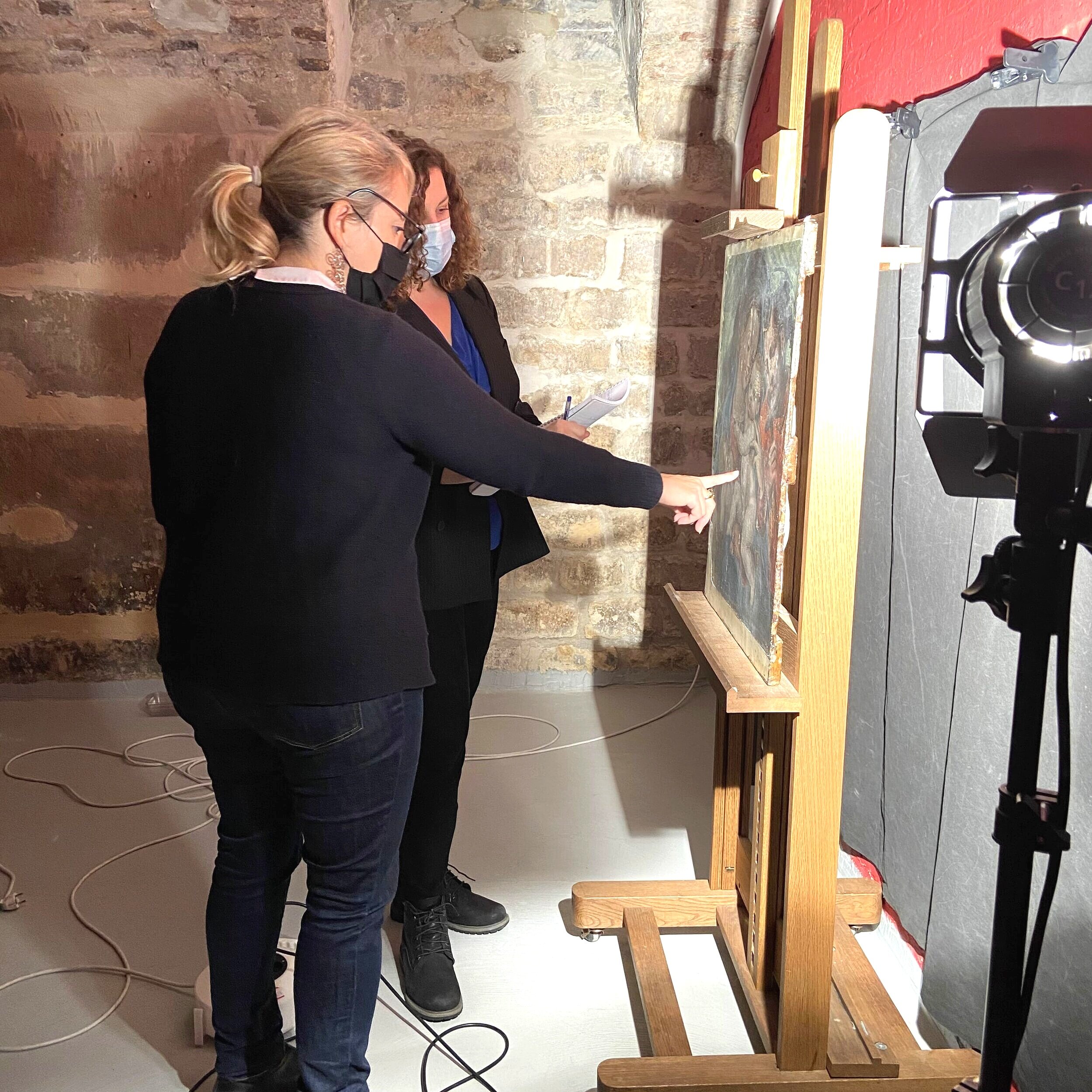
Under raking light, the painting is illuminated from only one side, at an oblique angle as related to its surface.
As stated above, raking light allows us to clearly see the surface’s texture, highlighting any differences, be it due to damage or to the artists’ doing, such as thicker brushstrokes or an impasto.
It is one of the two most common techniques used by conservators to study a piece when preparing a condition report as it reveals easily, quickly, and very clearly the surface condition of a painting.
Ultraviolet (UV) photography
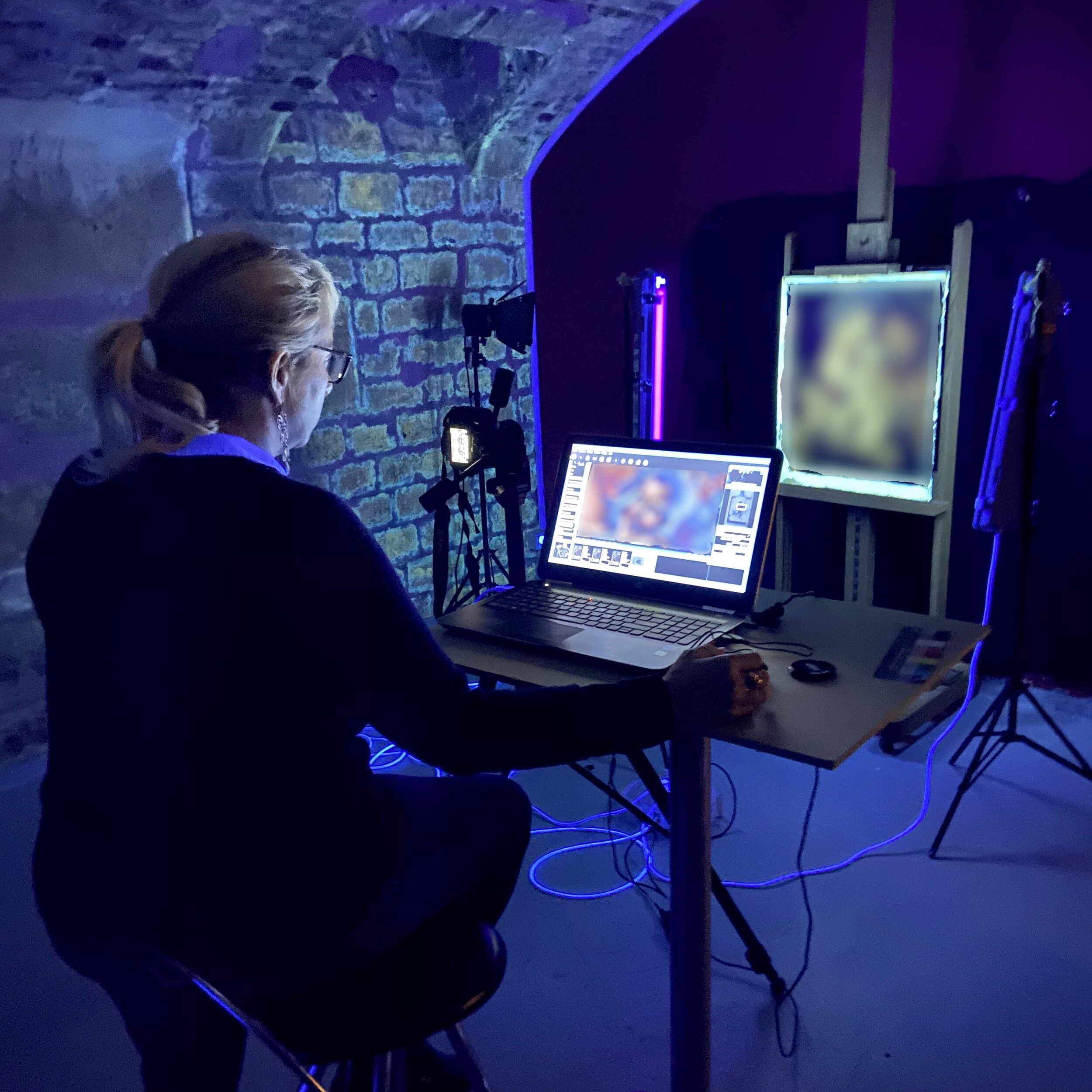
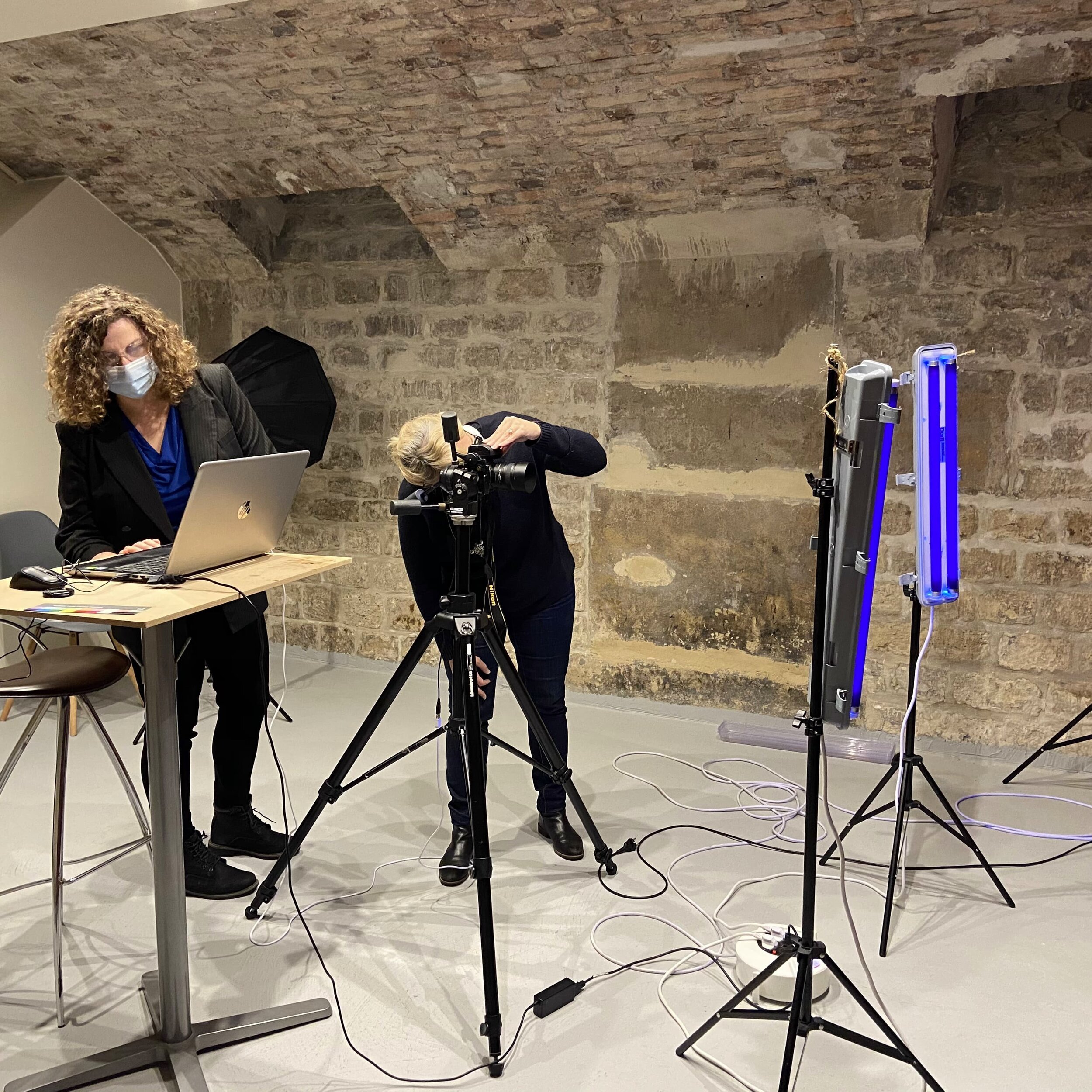
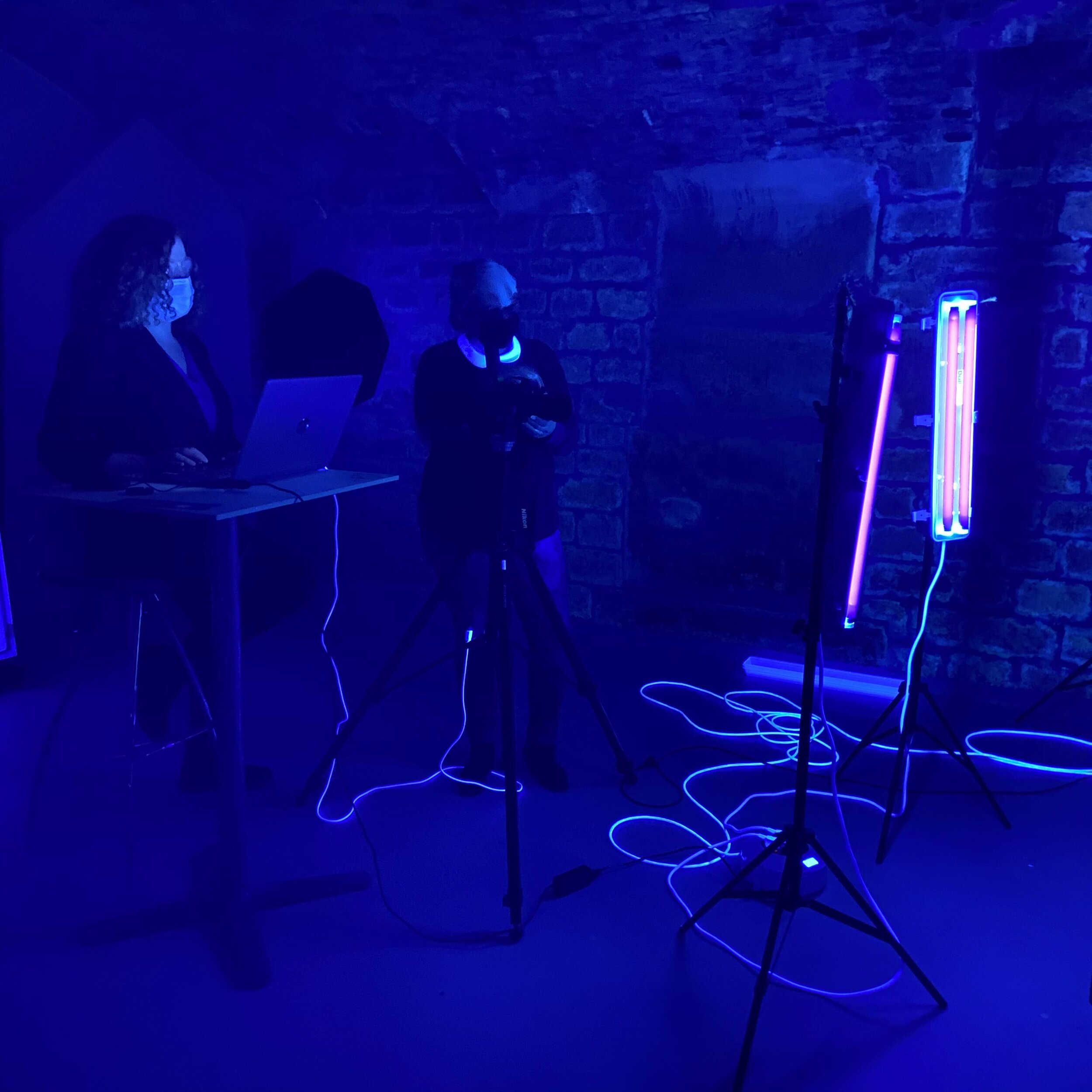
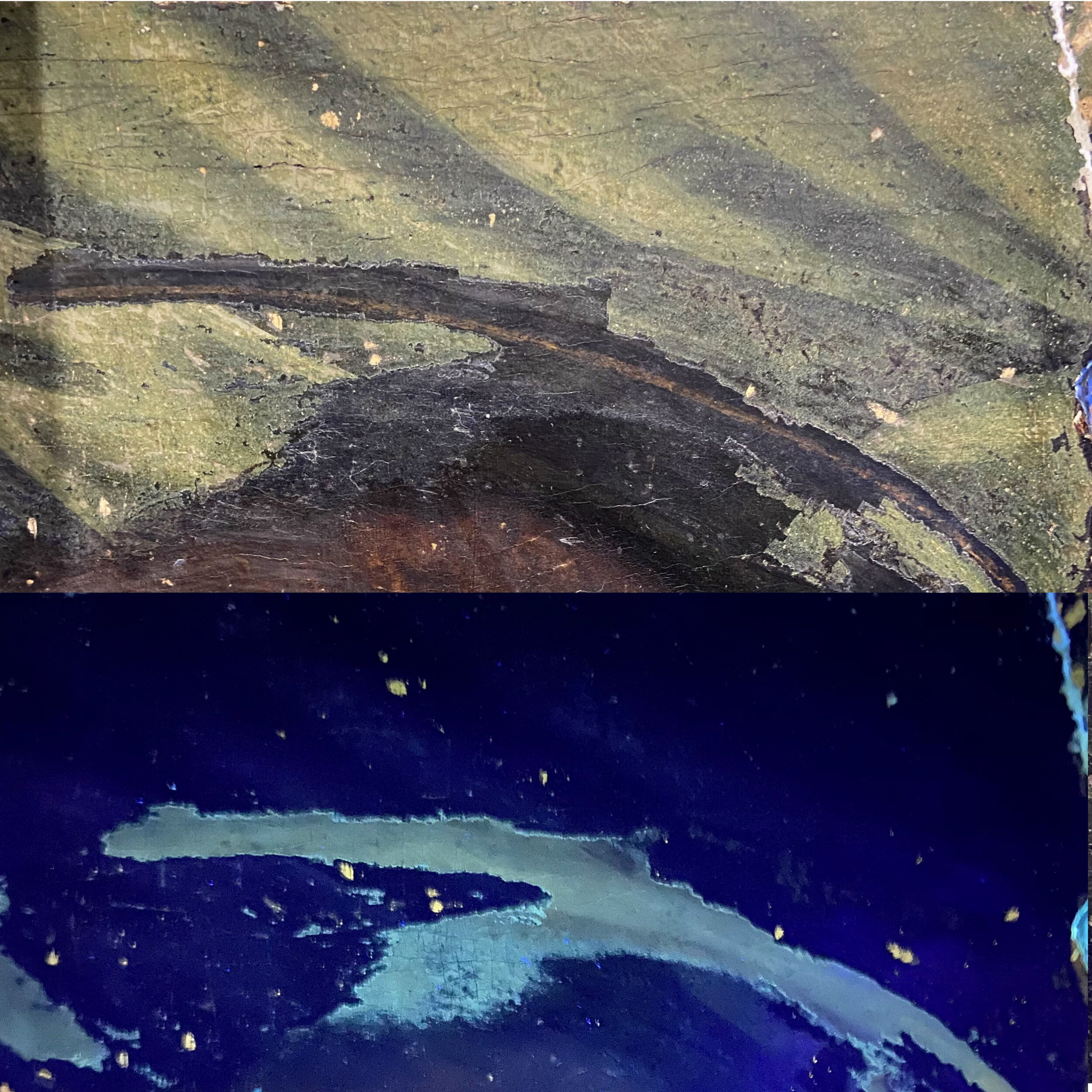
UV light is the other analytical technique most commonly used by conservators and conservation scientists alike, and is also included in condition reports.
UV light reveals:
Previous restorations, such as retouchings
Over-paintings
The presence of older natural resin varnishes
The probability of a signature or inscription’s authenticity, when compared to the surface surrounding it
The state of an artwork’s varnish
We have chosen to take things taken a step further and, in agreement with our client, have added these images to the collection’s inventory files for use in future treatment choices as well as comparison should there be any issues with the preventive conservation and storage measures that they decided on.
Infra-Red (IR) Reflectography
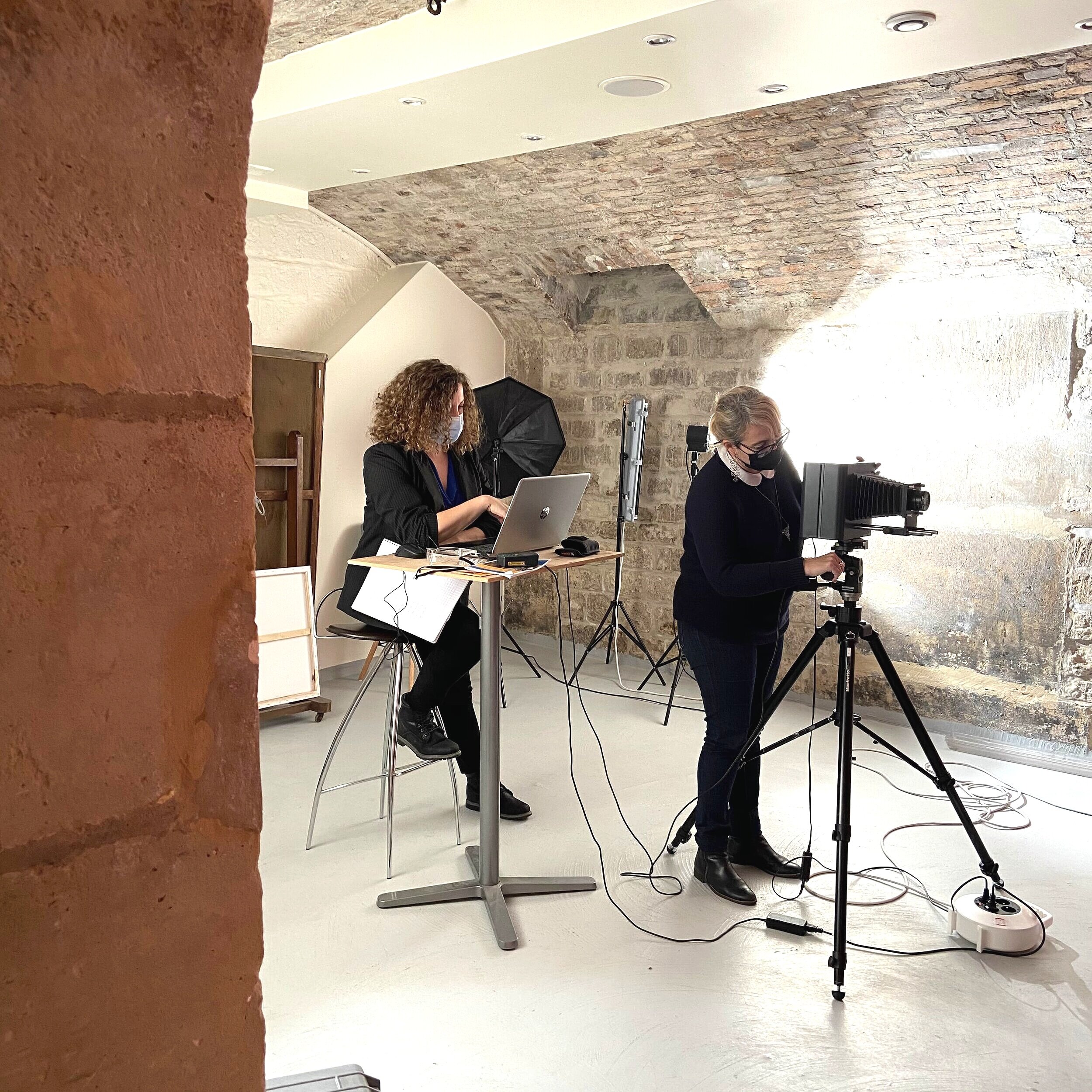
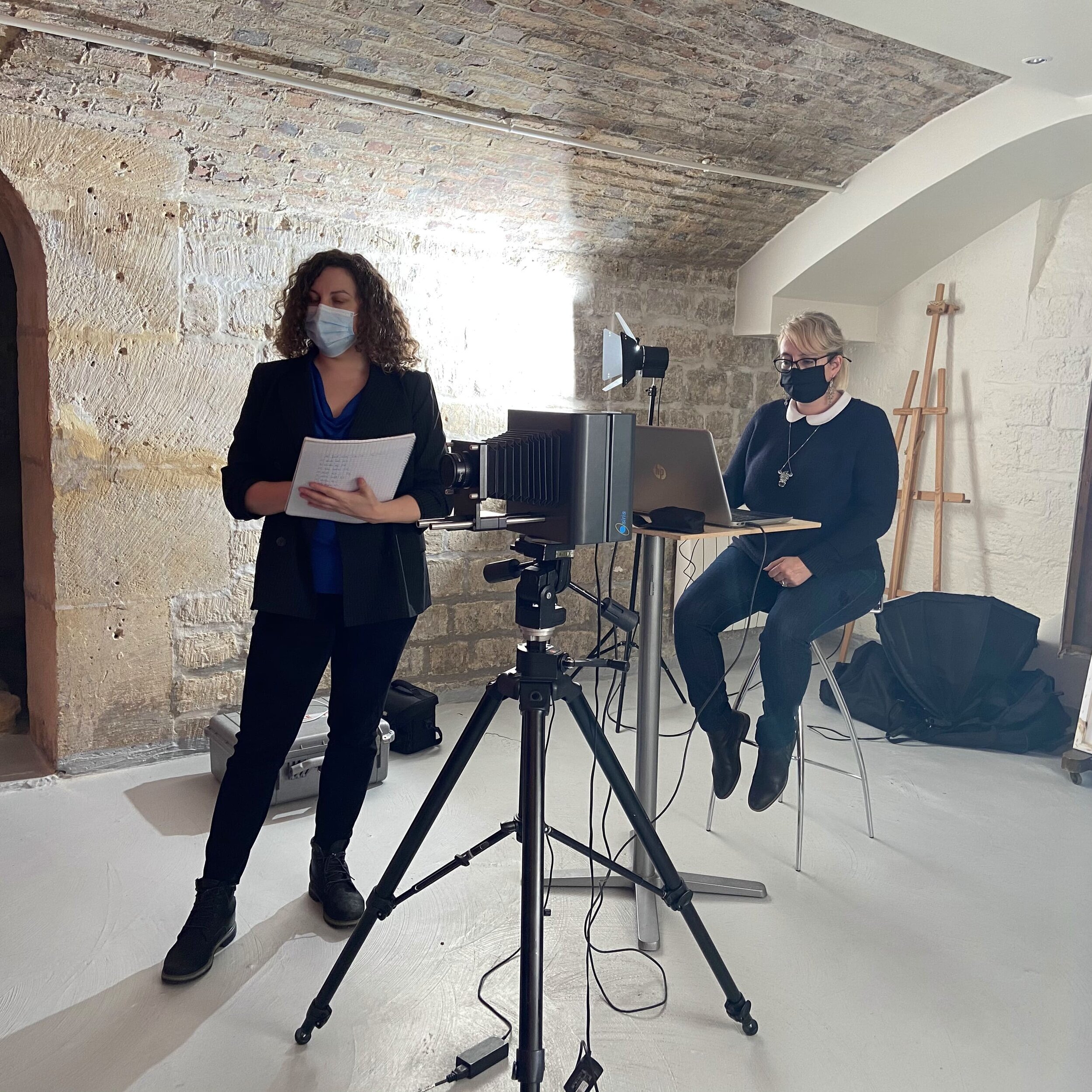
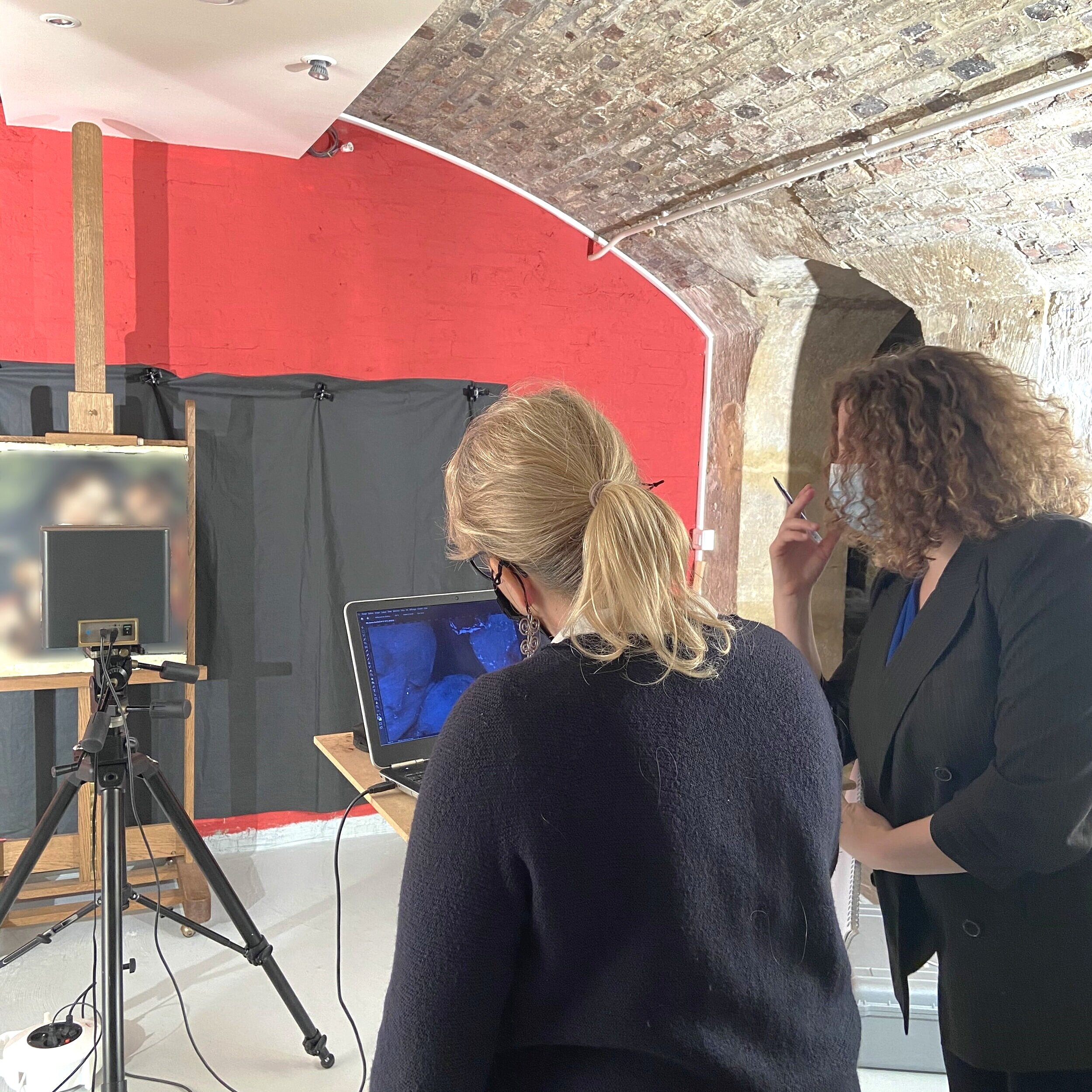
IR Reflectography is used to “see through” paint layers. This imaging technique allows us to study any existing underdrawings or compositional changes that lie beneath the visible paint layers.
IR Reflectography allows researchers to further understand the working process of an artist, which in turn will inform conservators on how to proceed. It is also used to help reveal fakes and forgeries, as these rarely have the type of underdrawings an original painting has, with all its mistakes and changes decided by the artist.
It’s been wonderful working on this collection with Art in Lab, and I look forward to future projects together. Throughout several weeks we have analysed paintings from different time periods and in different mediums, have created inventory files for all the pieces, and added condition reports to each one of these.
Thanks to the partnership between our two services the owner of these pieces has a full response to the questions of what he has, what state it is in, and what can be done to preserve it all moving forward, all in one place and without having to risk transporting the pieces or spending time going to see different specialists each in their own location.
Work in progress
Thanks to the ongoing partnership with Art In Lab we are able to work on collections from a holistic point of view.
As we move forward through the different project stages, our combined knowledge and expertise allow for better understanding of the works in front of us. Which in turn will provide a more complete report to our client.
The samples are studied under microscope in order to comprehend the stratigraphic structure of the paint layers, they were taken from a 19th century French oil on canvas. As we take a deeper look at the layers that make up the piece, we can see how the creative logic used by the artist. The build-up of layers tells the story of how the artist conceived the painting should be, how he built his image up from a simple drawing to the final work. It also helps date the piece, as we acquire more information on the pigments and other materials themselves.
Sample studying also plays a key role in confirming whether any paint or varnish was added after the artist finished the artwork, all of which, when combined with other tests such as UV, IR, and X-Ray, provides key information in understanding the object’s history.
What’s cooking?
I am delighted to announce a new partnership with an old friend: Art in Lab!
Following several exchanges and meetings, Renata Kaminker – Fine Art Solutions and Art in Lab have decided to work together on a series of requests from a private client.
We are delighted to be able to offer a complete solution to an increasing problem in private art collections: What do I have? What state is it in? Is it really as old as it purports to be? Is the author truly the one I think it is?
As we plan our approach to the incoming pieces and prepare the work that this new project requires, we look forward to answering this and any other questions that may arise along the way.
Come back to read on more news and details as we advance on this new and exciting project. We will be sharing insights into the hows and whys of our intervention choices.
